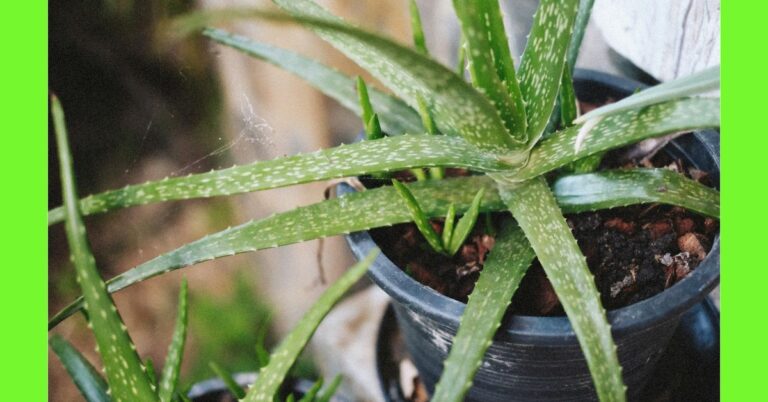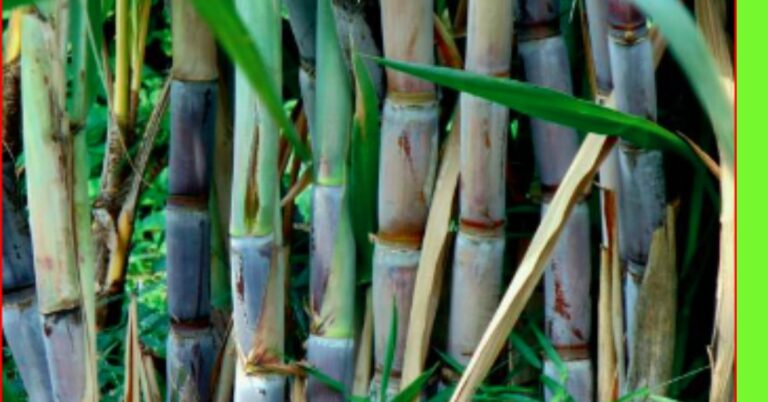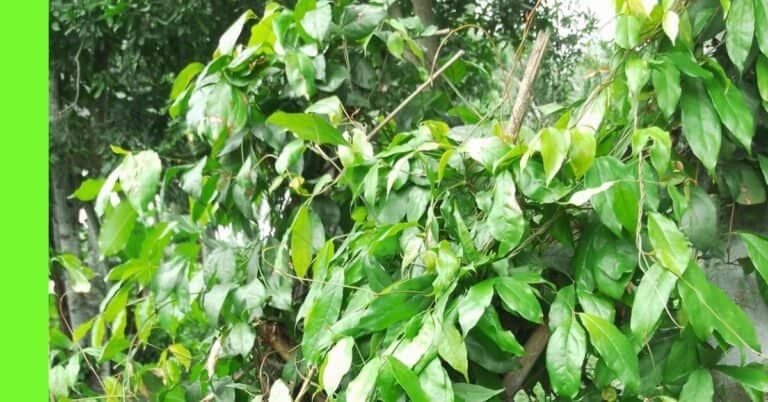How to Plant Girdle Pod (Mitracarpus scaber)

Girdle pod (Mitracarpus scaber) is a hardy annual herbaceous plant belonging to the Rubiaceae family.
It grows naturally in tropical Africa, Central America, and parts of the Caribbean, but is widely found in Nigeria as both a wild weed and a medicinal plant.
Despite its modest size, the Girdle pod has earned respect in traditional medicine across Nigeria due to its wide range of uses.
Traditionally, the leaves are applied in treating skin infections, wounds, eczema, ringworm, and boils.
Decoctions of the plant are used to treat fevers, coughs, and gastrointestinal issues.
Scientific studies have also shown that extracts from the plant possess antimicrobial, antifungal, and anti-inflammatory properties, validating its ethnobotanical uses.
In rural Nigeria, Girdle pod is often found growing naturally in farmlands, along roadsides, and in home gardens.
Because of its medicinal importance and increasing demand, cultivating the plant systematically instead of relying only on wild collection is becoming more relevant.
Description of the Plant
Growth Habit:
Small herb, erect or slightly spreading; typically 10–45 cm tall.
Stems:
Green, slender, and covered with fine hairs (villosus = “hairy”), sometimes becoming slightly woody at the base.
Leaves:
Opposite arrangement; narrow to oval shape with a smooth edge; slightly hairy on both sides; about 1–4 cm long.
Short leaf stalks or almost stalkless.
Flowers:
Very small white flowers, clustered at:
- Leaf axils (where the leaf joins the stem)
- Tips of the stem
Flowers are tubular with four tiny petals, characteristic of the Rubiaceae family.
Fruit & Seeds:
Small, dry capsule that cracks open when mature, releasing tiny brown seeds for easy spread.
Root System:
Fibrous and branching, designed for shallow soils and quick establishment.
Planting Season for Girdle Pod (Mitracarpus scaber) in Nigeria
The best planting season for Girdle pod in Nigeria is the early rainy season (March to June).
During this time, rainfall provides adequate soil moisture, which aids seed germination and plant establishment.
With irrigation, Girdle pod can also be planted during the dry season, but natural rainfall gives the best results.
Farmers and gardeners usually prefer the rainy season because it reduces the cost and labour of constant watering.
Since it is an annual plant, planting is typically done once per year, with harvesting taking place a few months after germination.
Planting the Girdle Pod (Mitracarpus scaber)
Cultivating Girdle pod requires understanding its growth habits and ensuring that it receives the right conditions for germination and leafy development.
Below are the step-by-step processes.
Step 1: Choose a Location
Select a site with the following conditions:
- Sunlight: Girdle pod thrives in full sun but can also tolerate partial shade.
- Soil: It prefers loamy or sandy-loam soils that are well-drained. Heavy clay soils are not ideal, as they retain too much water.
- Accessibility: Choose a location close to a water source for easy irrigation during the dry season.
Since it is a small herb, Girdle pod can be planted in home gardens, small plots, or intercropped with other crops, provided it is not overshadowed by taller plants.
Step 2: Land Clearing and Preparation
Clear the land of weeds, stumps, and debris to ensure the seedlings do not face competition. After clearing:
- Till the soil lightly to improve aeration and root penetration.
- Add compost or organic manure to boost soil fertility.
- Create nursery beds or flat seedbeds for direct sowing, depending on your method of propagation.
Step 3: Means of Propagation
Girdle pod is propagated mainly by seeds, which are tiny and light.
The seeds can be:
- Sown directly in the field (broadcast or in rows).
- Raised in nurseries and later transplanted.
Since the seeds are very small, care must be taken to avoid scattering them too deeply, as they require light to germinate.
Find agro suppliers on Floratalk Hub
Step 4: How to Plant Girdle Pod (Mitracarpus scaber) from Seed
Follow these steps for successful seed planting:
- Seed Collection: Collect mature seeds from dried pods of wild or cultivated plants. Clean and dry them before planting.
- Soil Preparation: Prepare a nursery bed with fine-textured loamy soil mixed with compost.
- Sowing: Scatter the seeds lightly on the soil surface. Do not bury them deep; just press gently so they make contact with the soil.
- Mulching: Apply a thin layer of grass mulch to protect the seeds from being washed away by rain.
- Watering: Water lightly but consistently to keep the soil moist.
- Transplanting: After 3–4 weeks, when seedlings are 5–7 cm tall, transplant them into the main field at a spacing of 20–30 cm apart.
For direct field planting, scatter seeds on prepared soil, cover very lightly with soil, and water immediately.
Step 5: Watering
Watering is essential, especially during the germination and early growth stages.
- Seedlings: Water lightly every day or every two days to maintain soil moisture.
- Mature plants: Water 2–3 times per week, depending on rainfall.
Avoid excessive watering, as the plant does not thrive in waterlogged conditions.
Step 6: Apply Manure
Girdle pod responds well to organic fertilisers.
- Apply well-decomposed poultry manure, cow dung, or compost before planting or at the seedling stage.
- A light application of manure every 3–4 weeks will enhance vegetative growth.
- Chemical fertilisers are not commonly used for this plant, as it is often cultivated for medicinal purposes, where organic production is preferred.
Maturity and Harvest
Girdle pod matures quickly, usually 8–10 weeks after planting.
Harvesting can begin once the plant is well-established.
For medicinal use, harvest involves cutting the leaves and tender stems.
Harvesting is best done in the morning when the leaves are fresh and full of moisture.
For seed collection, allow the plant to flower and produce seed capsules.
Once the capsules turn brown and begin to split, seeds can be collected, dried, and stored for future planting.
Pests and Diseases
Although Girdle pod is relatively hardy, it can still be affected by some pests and diseases:
- Aphids: Small insects that suck sap, causing yellowing leaves.
- Grasshoppers and caterpillars: Feed on leaves and reduce growth.
- Fungal infections: Can cause leaf spots, wilting, or stem rot, especially in humid conditions.
- Root rot: Occurs in poorly drained soils or when overwatered.
Pest and Disease Control
To protect the crop and ensure healthy growth:
- Cultural Practices
- Plant in well-drained soils.
- Avoid overcrowding; maintain proper spacing.
- Practice crop rotation to reduce disease buildup.
- Remove weeds regularly to prevent pests from hiding.
- Organic Methods
- Spray neem oil or soap solution to control aphids and leaf-eating insects.
- Apply wood ash around the base of plants to deter crawling pests.
- Use compost teas to boost plant resistance.
- Mechanical Methods
- Handpick visible pests like caterpillars.
- Prune infected leaves and dispose of them.
- Chemical Methods (last resort)
- If infestation is severe, mild insecticides or fungicides can be applied, but this should be minimised since the plant is mainly grown for medicinal use.
Girdle pod (Mitracarpus scaber) is a valuable medicinal plant that grows naturally across Nigeria but can also be cultivated for a consistent supply.
By planting it systematically, farmers, herbalists, and gardeners can ensure year-round availability of this important herb.
The cultivation process is simple: choose a sunny location with loamy soil, prepare the land, propagate through seeds, water moderately, and enrich the soil with organic manure.
Within two to three months, the plant matures and can be harvested for both medicinal use and seed collection.
Although relatively hardy, the plant may face challenges from pests like aphids and fungal diseases, which can be controlled using cultural, organic, or mild chemical methods.
With proper care, Girdle pod offers not only health benefits through its medicinal properties but also an opportunity for income generation through cultivation and sales in local herbal medicine markets.
Its resilience and adaptability to Nigerian soil and climate make it an excellent choice for small-scale farmers and home gardeners alike.
Hope this article was helpful.






